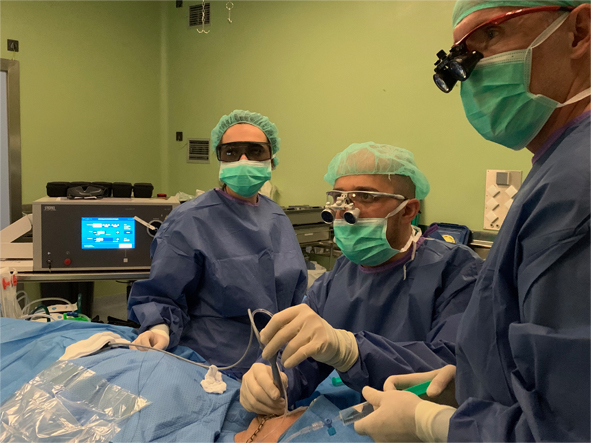Tumour Treatment
The treatment for tumours in the salivary glands is their removal.

- In the case of malignant lesions, the type of surgery and possible complementary treatments will be decided consensually by a team made up of otolaryngologists and oncologists.
- For most benign tumours, surgical treatment will be sufficient to eliminate the problem.
PAROTIDECTOMY
This is the surgical technique we use to remove tumours in the parotid gland. If performed by surgeons with consolidated experience, the risks of facial nerve damage and paralysis of one side of the face are minimised. Monitoring systems during surgery help us to identify this nerve but, despite having these means, it is essential that the team of surgeons have experience in locating the nerve in order to preserve it.
Partial resection techniques, which reduce the aesthetic impact of this type of surgery, without sacrificing the oncological principle of complete resection, are the most commonly used by our team. Facelift incisions mean that the scars are practically invisible after surgery.
SUBMAXILECTOMY
The removal of the submaxillary gland is a technically simpler process than that of the parotid gland. It is a very uncommon surgical procedure at our clinic since most of the pathologies of this gland are treated by sialoendoscopy.
Although very rare, tumours in the submaxillaries, malignant in 50% of cases, will require resection of the gland. Sometimes it will also require the removal of neck ganglia related to the gland itself and subsequent treatments with chemo and/or radiotherapy.
